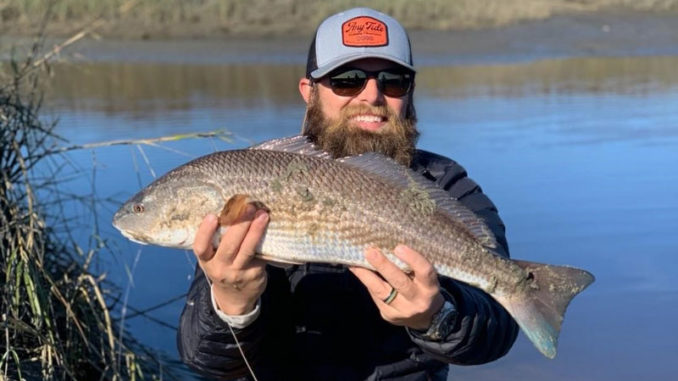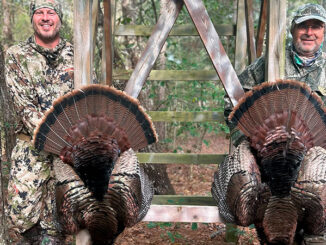
Schooling redfish provide hot fishing action this month
The Carolinas may get some cold weather in December, but water temperatures are far from their annual lows. And the inshore fishery is hopping this month with redfish anglers barely sleeping a wink, especially along the border between the two states in the Little River area.
One angler who loves December is Brandon Huskins of Any Tide Fishing Charters. December is the beginning of some of his best fishing of the year.
“Redfish start schooling in December. They get into big schools,” said Huskins (843-877-7068). “The reds are congregated and real hungry back in the shallow creeks.”
Huskins will fish both along the Intracoastal Waterway and the creeks. But he definitely prefers to jump between holes well back in the marshes along the North Carolina-South Carolina state line. On low tide, with minimal water available, redfish are congregated in big schools, but in small places.
Stay on the move from hole to hole
“I hole-jump this time of year; I look for any places back in a creek along the sharp, 90-degree turns,” he said. “You will have a shallow, sand flat, and then it will turn hard, and on these turns the water will be 6 to 10 feet deep,” he said.
Reds position in these deep holes and will feed on about any type of bait that passes by or tries to swim into these areas. The surrounding water may be shallow, but a few holes will hold plenty of fish. Huskins will bounce around from hole to hole and creek to creek until he finds a school of reds, and then he will spoon-feed them live or artificial baits.
“My go-to baits are mud minnows, or finger mullet if you can find them, on jigheads. I use what I call ‘double trouble’ — two mud minnows on the hook — the reds can’t stand it,” he said.
Huskins uses jigheads of several different colors; he has noticed that one color seems to produce more fish than others on certain days.
“Some days, a chartreuse jighead will outfish white 10-to-1, or it can be the opposite. Some jighead colors will just work better than others on certain days,” he said, believing that water color and clarity makes the difference.
“It’s something that catches their attention, and if it catches their attention quicker, you will get bit more often,” he said.





Be the first to comment